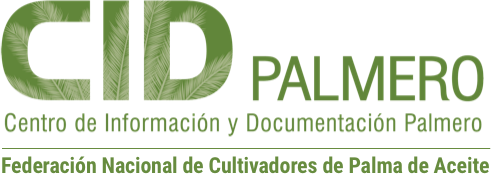| dc.creator | Hadli, Jyothi | |
| dc.date | 2013-01-01 | |
| dc.date.accessioned | 2020-07-25T11:20:30Z | |
| dc.date.available | 2020-07-25T11:20:30Z | |
| dc.identifier | https://publicaciones.fedepalma.org/index.php/palmas/article/view/10711 | |
| dc.identifier.uri | http://repositorio.fedepalma.org/handle/123456789/140285 | |
| dc.description | The Group KIS green technology provides complete solution for the Palm Oil Mill Effluent (pome) treatment without use of any lagoons (ponds) and consistently higher biogas generation. pome contains high amounts of organic waste materials with cod levels as high as 65,000 mg/l and bod levels of 30,000mg/l. There are several environmental hazards of open ponds (lagoons), such as: Underground water pollution, waste of fertile land, bad odor, and methane emissions causing global warming. 90% of methane is captured in the unique Design CSTR reactor and post reactor. Then, the pome is treated in secondary and tertiary aeration treatment. There, by eliminating the methane emission to reduce the cod/ bod levels, less than the requirements of the Department of environment regulations. In the paper some options for utilizing of biogas generated are shown. | en-US |
| dc.description | La tecnología verde del Grupo KIS ofrece una solución completa para el tratamiento de los efluentes de las plantas de beneficio (pome) sin el uso de lagunas, con una generación de biogás consistentemente más alta. Los pome contienen grandes cantidades de materiales de desechos orgánicos con niveles de demanda química de oxígeno (DQO) tan altas como 65,000 mg/l y niveles de demanda bioquímica de oxígeno (BOD) de 30,000mg/l. Existen múltiples riesgos ambientales de las lagunas abiertas, como que pueden contaminar las aguas subterráneas, se desperdician tierras fértiles, producen mal olor y hacen emisiones de metano que dañan el medio ambiente. El 90% del metano se captura en el reactor de diseño exclusivo del Grupo, el CSTR. Luego, los efluentes de la planta de beneficio se someten a tratamiento secundario y terciario por aireación. Con eso se eliminan las emisiones de metano para reducir los niveles de DQO/BOD a niveles inferiores a los requeridos por las autoridades ambientales. En este trabajo se presentan algunas opciones para la utilización del biogás generado, y otras igualmente rentables. | es-ES |
| dc.format | application/pdf | |
| dc.language | spa | |
| dc.publisher | Fedepalma | es-ES |
| dc.relation | https://publicaciones.fedepalma.org/index.php/palmas/article/view/10711/10697 | |
| dc.rights | Derechos de autor 2017 Revista Palmas | es-ES |
| dc.rights | https://creativecommons.org/licenses/by-nc-nd/4.0 | es-ES |
| dc.source | Revista Palmas; Vol. 34 (2013): No Especial, tomo II; 155-159 | es-ES |
| dc.source | 0121-2923 | |
| dc.subject | zero ponds | en-US |
| dc.subject | Continuously Stirred Tank Reactor | en-US |
| dc.subject | CSTR | en-US |
| dc.subject | palm oil mill effluent treatment | en-US |
| dc.subject | cero lagunas | es-ES |
| dc.subject | tanque reactor continuamente agitado | es-ES |
| dc.subject | CSTR | es-ES |
| dc.subject | tratamiento de efluentes en las plantas extractoras | es-ES |
| dc.title | "Zero Ponds": Total Green Solution for POME Treatment, and Affordable and Profitable for Sustainable Future | en-US |
| dc.title | Cero lagunas: una tecnología totalmente ecológica para el tratamiento de efluentes en las plantas de beneficio, asequible y rentable | es-ES |
| dc.type | info:eu-repo/semantics/article | |
| dc.type | info:eu-repo/semantics/publishedVersion | |


